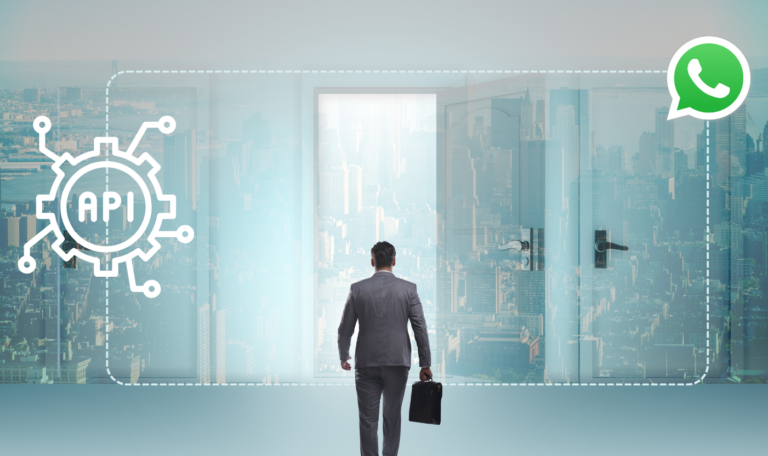Introduction
In 2025, businesses are more connected to their customers than ever before. The rapid advancement of technology and the shift in consumer behavior have made multichannel communication not just an option but a necessity. Companies that fail to leverage multiple communication channels risk losing customer engagement, brand loyalty, and revenue. This blog explores why multichannel communication has become essential in 2025 and how businesses can maximize its potential to stay ahead of the competition.
The Rise of Multichannel Communication
Multichannel communication refers to the use of multiple platforms and mediums to interact with customers. This includes email, social media, SMS, live chat, voice calls, WhatsApp, and AI-powered chatbots. As digital transformation accelerates, consumers expect seamless and instant interactions across various touchpoints.
Key Drivers of Multichannel Communication Growth in 2025
- Consumer Expectations for Instant Connectivity
- Customers expect real-time interactions and personalized communication. Businesses that fail to provide instant responses risk losing customers to competitors offering better experiences.
- AI and Automation Integration
- AI-driven chatbots and automation tools are making multichannel communication more efficient by handling routine queries, qualifying leads, and offering 24/7 support.
- Omnichannel Commerce Growth
- E-commerce and retail businesses have seen a massive surge in omnichannel shopping experiences, where customers engage across multiple platforms before making a purchase.
- Privacy and Compliance Regulations
- As data protection laws become stricter, businesses need to adopt secure and compliant communication channels that respect customer privacy while maintaining engagement.
- Rise of Remote Work and Digital Collaboration
- With hybrid work models becoming the norm, businesses must ensure seamless internal and external communication using multiple channels like Slack, Zoom, WhatsApp, and emails.
How Multichannel Communication Benefits Businesses
1. Enhanced Customer Experience
Customers now interact with brands on their preferred channels. Whether it’s a WhatsApp message, an Instagram DM, or a live chat query, businesses that offer multiple touchpoints create a superior customer experience.
2. Increased Engagement and Retention
Customers are more likely to stay engaged with brands that communicate through their preferred channels. Engaged customers tend to be more loyal and provide higher lifetime value.
3. Higher Conversion Rates
A well-implemented multichannel strategy enables businesses to nurture leads through various stages of the buyer’s journey, leading to higher conversion rates.
4. Improved Operational Efficiency
AI and automation in multichannel communication reduce workload by handling repetitive tasks, allowing human agents to focus on complex interactions.
5. Scalability and Cost Efficiency
Cloud-based multichannel communication platforms allow businesses to scale their operations without incurring high costs. This is particularly beneficial for startups and SMEs.
Top Multichannel Communication Strategies in 2025
1. AI-Powered Chatbots and Virtual Assistants
- AI chatbots on WhatsApp, Facebook Messenger, and websites offer real-time assistance, product recommendations, and customer support without human intervention.
2. WhatsApp and Business Messaging
- WhatsApp has become a dominant communication channel, especially for customer support and order updates. Businesses use WhatsApp API for automated messaging and personalized interactions.
3. Voice and Video Calling Integration
- Many companies now provide customer support via voice and video calls through platforms like Zoom, Google Meet, and Telnyx API. Video consultations have gained traction in industries like healthcare, real estate, and education.
4. Social Media as a Customer Support Hub
- Consumers frequently reach out to brands through social media platforms like Instagram, Twitter (X), and LinkedIn. Companies use social listening tools to respond proactively to customer queries and feedback.
5. Personalized Email Marketing with AI Insights
- Businesses leverage AI to segment audiences and send hyper-personalized email campaigns based on customer behavior and preferences.
6. SMS and Push Notifications for Real-Time Updates
- Despite the growth of messaging apps, SMS remains an essential channel for transactional notifications, reminders, and security alerts.
7. Live Chat on Websites and Apps
- Live chat solutions integrated into business websites help in real-time query resolution, boosting conversions and customer satisfaction.
8. Unified Inbox for Seamless Communication
- Businesses are adopting unified inbox solutions that centralize all customer interactions from various channels, ensuring a smooth communication experience.
Challenges in Implementing Multichannel Communication
1. Data Fragmentation and Integration Issues
- Managing customer data across multiple platforms can be challenging. Businesses need centralized CRMs that integrate all communication channels.
2. Maintaining Consistency Across Channels
- Ensuring a uniform brand voice across email, social media, and messaging apps requires a well-defined content strategy and automation tools.
3. Security and Privacy Concerns
- Compliance with regulations like GDPR and CCPA is essential to protect customer data and maintain trust.
4. Balancing Automation and Human Interaction
- While automation improves efficiency, businesses must ensure human intervention for complex queries to provide a personalized touch.
5. Choosing the Right Platforms for Target Audience
- Not all communication channels are relevant for every business. Companies must analyze their audience preferences before investing in a multichannel strategy.
Future Trends in Multichannel Communication
1. AI-Powered Conversational Commerce
- More businesses will use AI-driven chatbots to facilitate sales and transactions directly within messaging apps.
2. Voice and Video Messaging Growth
- Customers prefer sending voice notes and video messages rather than typing. Businesses will adapt by offering support through these mediums.
3. Augmented Reality (AR) for Customer Engagement
- Brands will use AR filters and interactive experiences on social media to engage customers in innovative ways.
4. Hyper-Personalization with AI
- AI will further enhance personalized communication by analyzing real-time customer data to deliver tailored messages.
5. Blockchain-Based Secure Messaging
- To address privacy concerns, blockchain technology will play a role in securing business communications.
Conclusion
Multichannel communication has become indispensable in 2025, shaping how businesses engage with customers and streamline their operations. As technology continues to evolve, companies must embrace AI-driven solutions, integrate multiple communication platforms, and prioritize customer-centric strategies to stay ahead in the competitive landscape. By adopting a robust multichannel approach, businesses can enhance customer experience, boost engagement, and drive sustainable growth in the digital era.
If you want to use multichannel communication from a single point get your free trial now or book a demo with us





